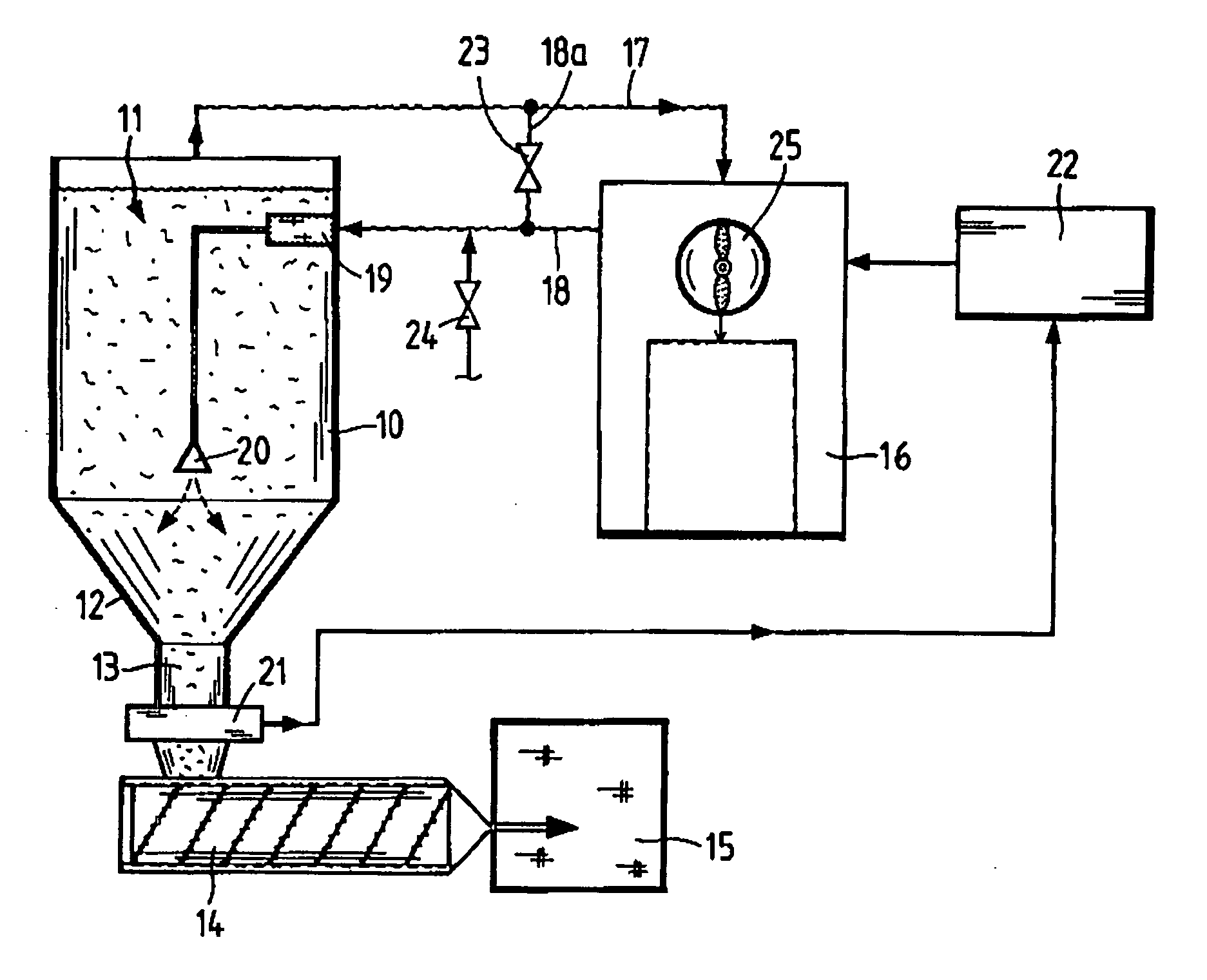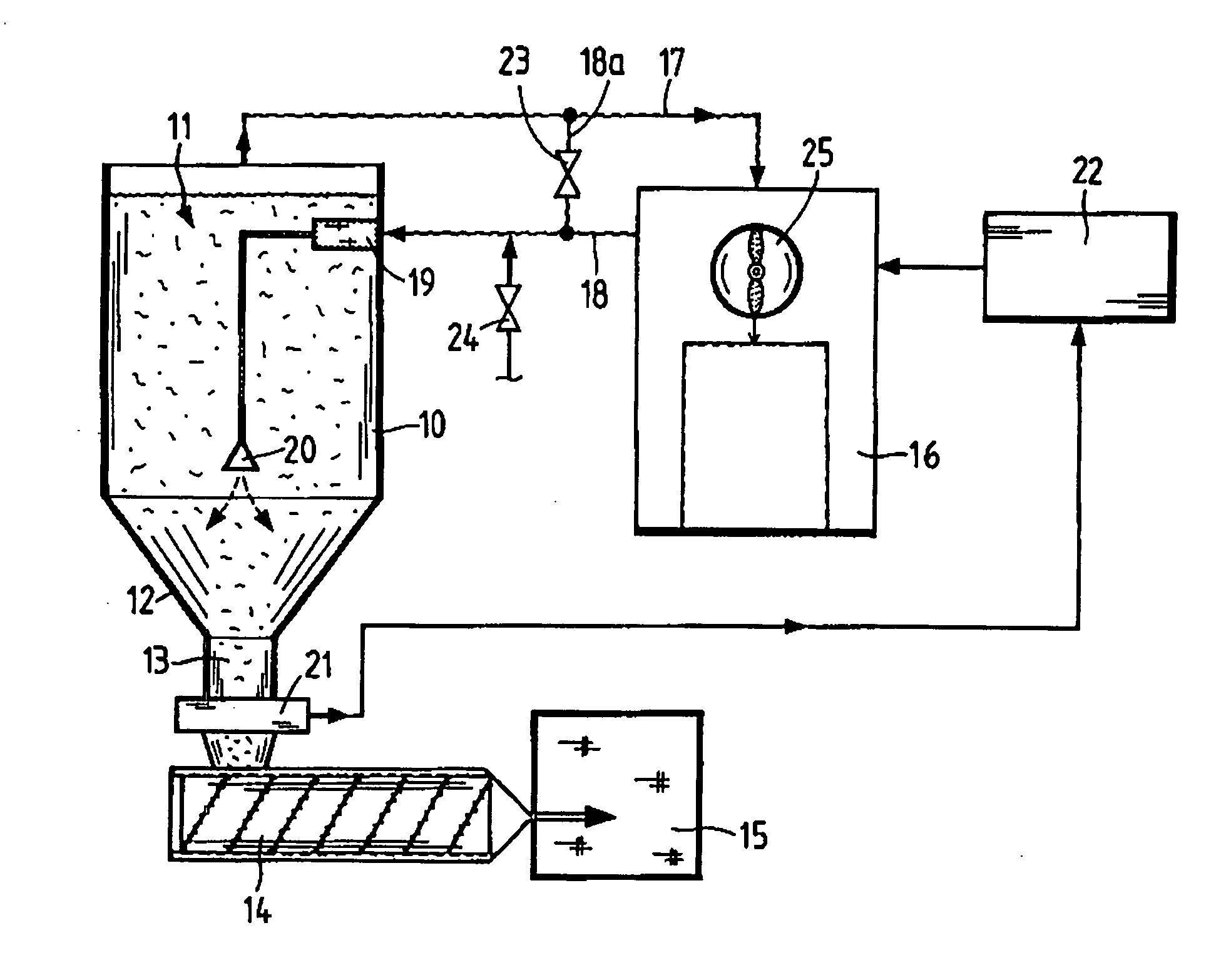Method for drying synthetic resin pellets
a synthetic resin and pellet technology, applied in the field of synthetic resin pellet drying, can solve the problems of difficult to detect acetaldehyde, difficult to dry, and difficult to dry, and achieve the effect of improving the quality reducing the amount of synthetic resin pellets
- Summary
- Abstract
- Description
- Claims
- Application Information
AI Technical Summary
Benefits of technology
Problems solved by technology
Method used
Image
Examples
Embodiment Construction
[0024] The apparatus for drying synthetic resin pellets comprises a hopper or vessel 10 holding the synthetic resin pellets, particularly polyethylene terephthalate (PET) 11. This hopper has a funnel-shaped outlet 12. Below this outlet 12 is a cylindrical outlet fitting 13, and below the outlet fitting is an extruder 14. In front of the extruder, there is an injection mold 15 for producing the preforms.
[0025] To dry gas or air, a drying apparatus 16 is provided. Such an apparatus is known, for example, from U.S. Pat. No. 5,199,964. This drying apparatus receives moist exhaust air from the hopper 10 through line 17. The drying apparatus comprises an absorbent, e.g., silica gel and a molecular sieve. The absorbent withdraws the moisture entrained in the moist exhaust air, so that the dry air leaving the drying apparatus can be supplied to the hopper 10 through line 18. At the hopper this air is heated to the required temperature by a heating apparatus 19 and flows through an air diff...
PUM
| Property | Measurement | Unit |
|---|---|---|
| temperature | aaaaa | aaaaa |
| dew point | aaaaa | aaaaa |
| concentration | aaaaa | aaaaa |
Abstract
Description
Claims
Application Information
 Login to View More
Login to View More - R&D
- Intellectual Property
- Life Sciences
- Materials
- Tech Scout
- Unparalleled Data Quality
- Higher Quality Content
- 60% Fewer Hallucinations
Browse by: Latest US Patents, China's latest patents, Technical Efficacy Thesaurus, Application Domain, Technology Topic, Popular Technical Reports.
© 2025 PatSnap. All rights reserved.Legal|Privacy policy|Modern Slavery Act Transparency Statement|Sitemap|About US| Contact US: help@patsnap.com


